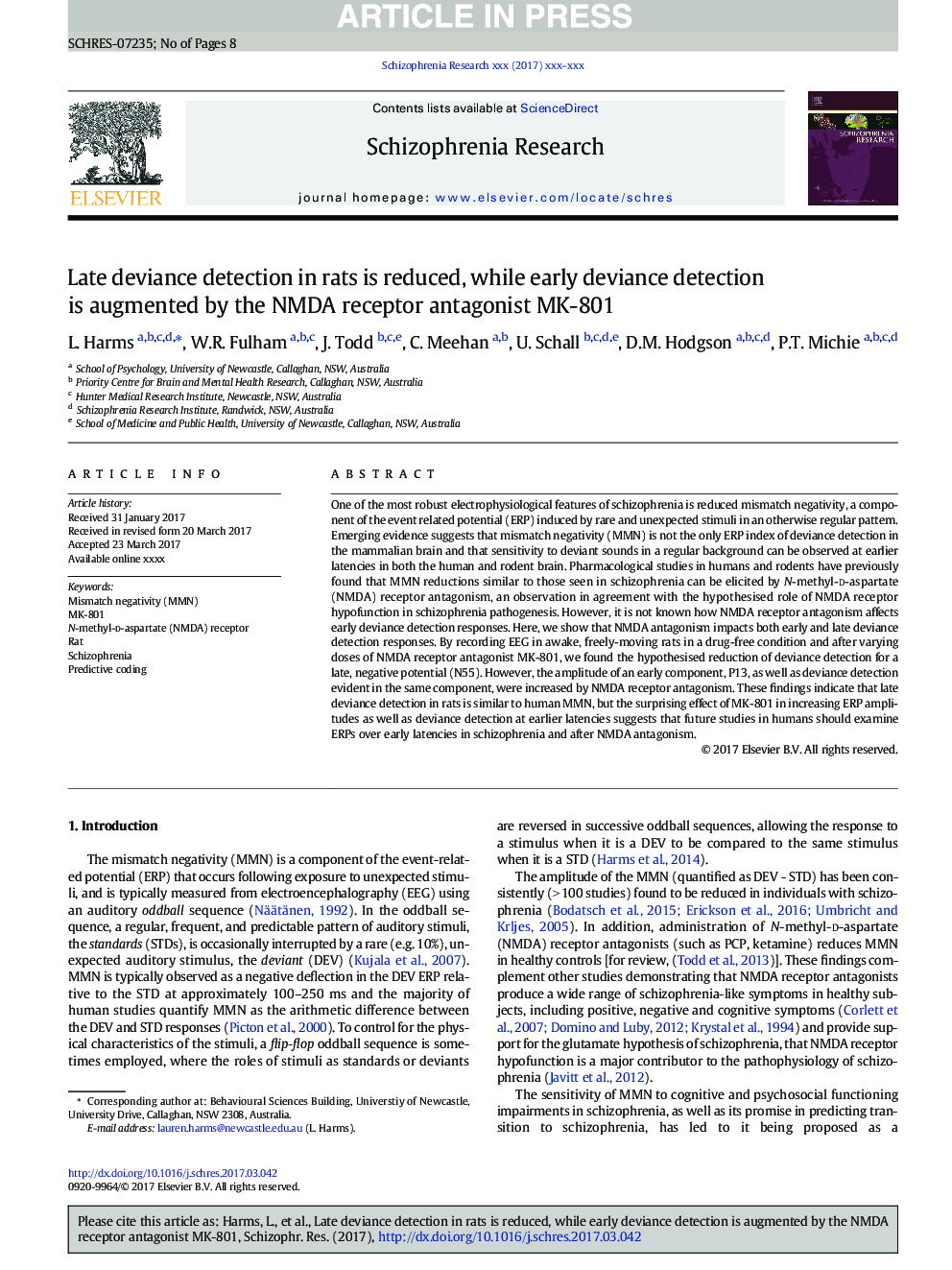| Article ID | Journal | Published Year | Pages | File Type |
|---|---|---|---|---|
| 6822300 | Schizophrenia Research | 2018 | 8 Pages |
Abstract
One of the most robust electrophysiological features of schizophrenia is reduced mismatch negativity, a component of the event related potential (ERP) induced by rare and unexpected stimuli in an otherwise regular pattern. Emerging evidence suggests that mismatch negativity (MMN) is not the only ERP index of deviance detection in the mammalian brain and that sensitivity to deviant sounds in a regular background can be observed at earlier latencies in both the human and rodent brain. Pharmacological studies in humans and rodents have previously found that MMN reductions similar to those seen in schizophrenia can be elicited by N-methyl-d-aspartate (NMDA) receptor antagonism, an observation in agreement with the hypothesised role of NMDA receptor hypofunction in schizophrenia pathogenesis. However, it is not known how NMDA receptor antagonism affects early deviance detection responses. Here, we show that NMDA antagonism impacts both early and late deviance detection responses. By recording EEG in awake, freely-moving rats in a drug-free condition and after varying doses of NMDA receptor antagonist MK-801, we found the hypothesised reduction of deviance detection for a late, negative potential (N55). However, the amplitude of an early component, P13, as well as deviance detection evident in the same component, were increased by NMDA receptor antagonism. These findings indicate that late deviance detection in rats is similar to human MMN, but the surprising effect of MK-801 in increasing ERP amplitudes as well as deviance detection at earlier latencies suggests that future studies in humans should examine ERPs over early latencies in schizophrenia and after NMDA antagonism.
Keywords
Related Topics
Life Sciences
Neuroscience
Behavioral Neuroscience
Authors
L. Harms, W.R. Fulham, J. Todd, C. Meehan, U. Schall, D.M. Hodgson, P.T. Michie,
